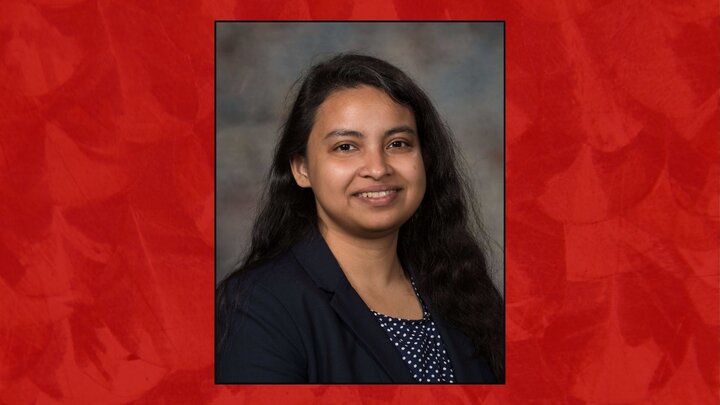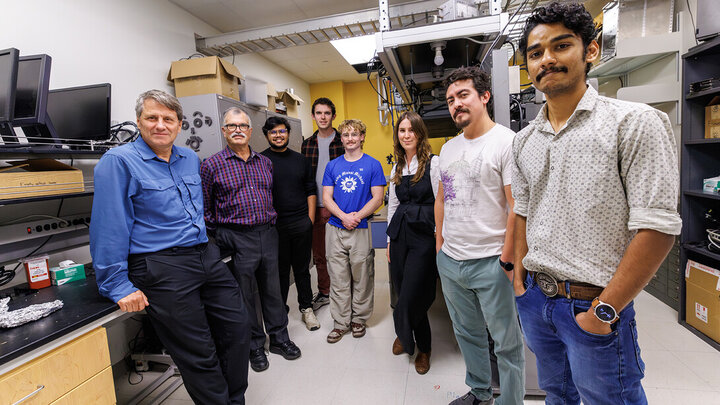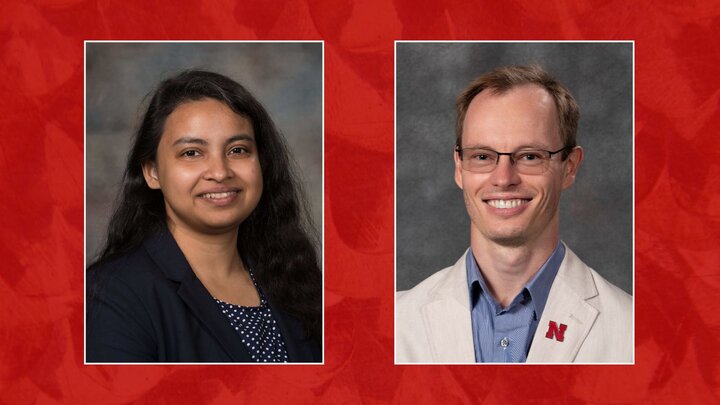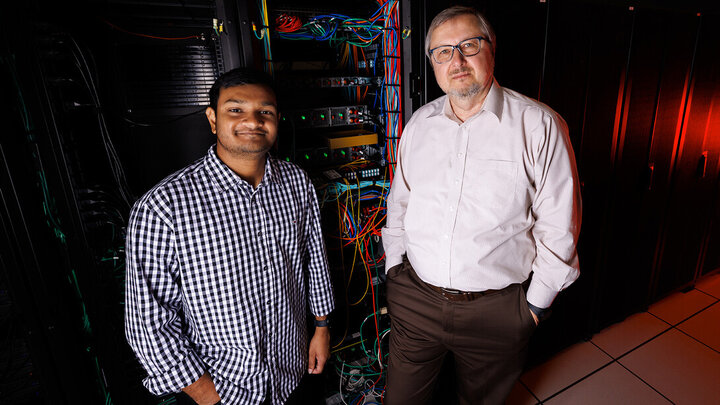Dr. George Gogos, Nebraska Center for Energy Science Research (NCESR) Director highlights NCESR research success of faculty and students in the Director's Corner. Read here the first highlighted story about Dr. Shudipto Konika Dishari.
Before moving to Nebraska, lignin wasn’t even on my radar!
In a state driven by agricultural innovation and sustainability, I discovered that nature quietly offers me an incredible palette of polymers, brimming with possibilities I have never imagined exploring. As a young faculty of UNL, I realized that with my years of training in polymers and energy, I had something unique to give to Nebraska and beyond that no one else considered.
We are striving to embrace clean and sustainable energy technologies. However, what we’ve often overlooked is that the materials used to make these technologies are far from sustainable. This realization gave me a profound sense of purpose—to explore the potential of lignin, a plant-based polymer and a waste byproduct of pulp and paper industries and cellulosic biorefineries. With many attractive molecular features and natural abundance, lignin holds immense promise as a sustainable foundation for a wide range of renewable energy materials.
In 2020, I received a 2-year grant from the Nebraska Center for Energy Science Research (NCESR) to investigate lignin-based ion-conducting materials for energy conversion and storage devices. This was a collaborative effort with Prof. Mark Wilkins (now at Kansas State University). Wilkins extracted lignin first from diverse agricultural and forestry sources, like Norway spruce, eastern red cedar, and corn stover using cutting-edge green techniques. Then, I chemically transformed the extracted lignin into ion-conducting polymers that can find applications in a wide range of batteries and fuel cells, demonstrating that this often-overlooked byproduct, when transformed into functional lignin, outperforms industry-standard materials, like Nafion.
What we achieved was more than a scientific breakthrough. It was a validation of lignin’s potential as a cost-effective, eco-friendly, and efficient alternative for energy systems. While Nafion, a state-of-the-art polymer, is perfluorinated and tied to concerns about PFAS (per- and polyfluoroalkyl substances), lignin offers a high-performing solution, and many non-perfluorinated polymers could not beat Nafion when used in electrodes. Lignin nailed it!
The success of this 2-year project laid the foundation for significant advancements, enabling me to secure federal funding through the National Science Foundation (NSF)’s Electrochemical Systems program in 2023. This marked my first federally funded lignin project, supporting my mantra: “GREEN Energy using GREEN Materials!”
Building on this momentum, I am also collaborating with Iowa State University on a project funded by the Iowa Department of Energy for the AI-guided design of microbial electrochemical systems utilizing lignin.
The recognition for these efforts has been truly humbling. I was honored with the 3M Non-Tenured Faculty Award in 2021 and the American Chemical Society (ACS)’s Polymeric Materials Science and Engineering (PMSE) Early Investigator Award in 2023.
While advancing green energy research, I became equally passionate about fostering energy literacy and STEM education in Nebraska. Engaging with students from diverse communities during STEM camps revealed a striking reality: there is a significant variation in their extent of knowledge and prior background about energy and sustainability. Without a prior understanding of the background of the incoming campers, the camps often appeared to be disconnected efforts. I also discovered that there are reports available on the status of school-level energy education in some other states, but not in Nebraska.
This motivated me to take action. Leveraging my NSF CAREER Award, I launched a 2-phase, Institutional Review Board (IRB)-approved energy literacy infrastructure study across high schools in Nebraska. Phase 1 featured qualitative interviews of selected teachers to understand their experiences, challenges, and needs. These insights informed Phase 2, a statewide survey targeting all high school science teachers in Nebraska. While the project was primarily funded by NSF, recognizing the significance of this work, NCESR and the UNL Chemical and Biomolecular Engineering stepped in to provide additional support.
The findings from this study were striking! Over half of the teachers reported feeling unprepared to teach advanced energy STEM topics, citing limited background, knowledge, resources, professional development, and guidance for hands-on activities aligned with Nebraska College and Career Ready Science Standards (NCCRS-S). Financial (74%) and travel (67%) constraints further limited access to in-person training. This highlighted the need for alternative modes of engagement, particularly for remote schools.
Since 2021, these data-driven insights have guided my efforts to redefine K-12 outreach. I prioritized virtual STEM workshops and camps to reach geographically constrained and underserved regions of Nebraska. I have a wonderful group of students who join forces in these efforts. Together we develop STEM kits and ship those to the participants in advance. We also put effort into providing detailed instructions on experiments and relevant STEM concepts so that the teachers can easily adapt those in their classrooms. The hope here is to empower the teachers, expand energy literacy beyond metropolitan areas, and add a new dimension to broadening participation in STEM education.
The impact of this work has been immensely rewarding. The energy literacy initiatives and data-driven, innovative virtual camp designs earned us the American Society for Energy Education (ASEE) Midwest Section Best Paper Award two years in a row (2023 and 2024).
I was also honored with the 2023 ASEE Midwest Outstanding Teaching Award for my contributions to engineering and energy education.
Thanks to NCESR for the unwavering support, which has enabled me to pursue my passion for clean energy using green materials, push the boundaries of materials research, and do something meaningful for Nebraska.




